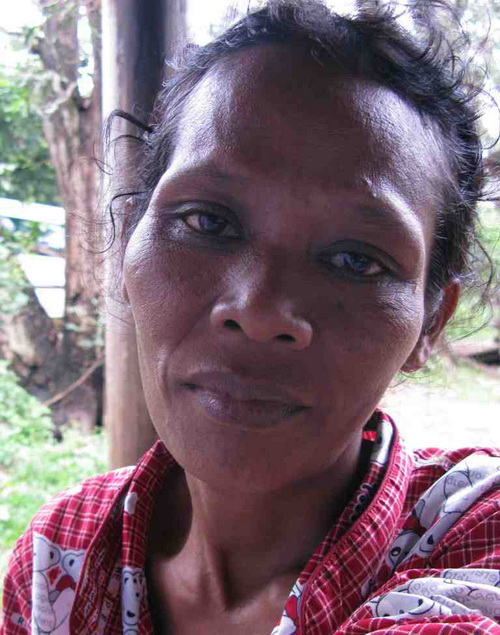Traditional accounts of human settlement have traced the development of ancient and sophisticated cultures, like those along the Nile and Yangtze rivers, through the historical and archaeological detritus of their achievements. For older human populations where there are often no records and only scant archeological fragments, linguistic and genetic studies have proved invaluable. Both language and DNA share a surprising number of common features: both were brought along by ancient humans migrating across Africa and then Eurasia, both evolved and changed as different groups of humans met, interbred, and mixed their cultures, both can be grouped in families and geographically positioned to track the spread of human populations, and most importantly, both retrain evidence of their ancient roots and the changes they underwent.
Piecing together the linguistic and genetic evidence from both maternal mitochondrial DNA and paternal Y-chromosome diversity across Asian populations, researchers painted a picture of modern humans exiting Africa and entering the southern part of eastern Asia around 60,000 years before then turning north and migrating to mainland East Asia some 40,000 years ago. Recent genome-wide sequence variation analysis paired with the linguistic history of the area supports this idea of southern origin and northward migration, as Austro-Asiatic speaking populations were found at a basal position in a phylogenetic tree of genetic relationships among Asian populations. This largely concurs with pure linguistic studies that hold that languages in the Austro-Asiatic family are likely indigenous to southeastern Asia and originated there first, while language families such as Indic, Tai, Austronesian, Tibeto-Burman, and then later Sino-Tibetan, all resulted from much later migrations into the area.
Both the genetic and linguistic evidence make a compelling case mainland Southeast Asia and southern China as the potential cradle of modern humans during the initial settlement of eastern Asia. Unfortunately, these studies only impart an opaque understanding of human migration, and offer little specifics in garnering a greater understanding of pre-historic Southeast and East Asian humans. Many other studies have thankfully focused on piecing together the image one population or migration at a time.
Several years ago, during an earlier study on human migration patterns, Bing SU’s group from the Kunming Institute of Zoology, Chinese Academy of Sciences (KIZ, CAS), found something odd—among the samples taken from some Cambodians males, there was a surprisingly high genetic diversity as compared to the surrounding populations. This unexpected find suggested there may be some inherited ancient genetic diversity among Cambodian aborigines, which would be a provocative scientific and historical find. Unfortunately, there was no way to explore this idea further; work on Cambodia is scare, the archaeological evidence is almost non-existent, and there are an extremely limited number of genetic samples of Cambodian aboriginal populations.
Cambodia would seem a potentially likely place for the expected initial peopling of Southeastern Asia. Ancient Cambodia was in close proximity to the Indian sub-continent and much of the Indochina peninsula, and its pre-history is largely unknown, thanks to the tropical climate and lack of archeological studies in the area. The most intriguing part is that after eons of settlement in the area, the modern day population of 13.4 million (96% of which belongs to the Khmer ethnic group alongside 20 minority ethnic groups that primarily live in the northeastern provinces) still primarily speaks Austro-Asiatic languages, including the dominant Khmer and nearly all the aboriginal peoples.
Fortunately, SU had not abandoned the initial idea from his earlier work. Over the past year, working in cooperation with the Royal University of Phnom Penh, his team from KIZ collected 1,054 unrelated genetic samples, representing 13 aboriginal ethnic populations and one Khmer population from three provinces in northeastern Cambodia. After high-resolution mtDNA diversity analyses of the samples, SU’s group found that Cambodian aboriginal populations still carry ancient sequence polymorphisms in their maternal lineages, suggesting that Cambodia was probably located in the region where the earliest modern human settlers initially populated eastern Asia.
In total, analysis yielded eight novel mtDNA lineages in Cambodians, including four basal haplogroups and four sub-branches. Subsequent dating of the mtDNA haplogroups supports the antiquity of Cambodian populations, with most of the estimated haplogroup ages exceeding 25,000 years. Of the newly defined basal haplogroups, named M59, M69, M78 and N7, the age is even more astonishing, with estimates placing them 36,000 to 68,000 years old, directly within the suggested time of the earliest human settlement in the region.
While most of the newly haplogroups SU’s team identified from Cambodians also exist in other Asian populations, the sequences among Cambodians are highly diverged from known non-Cambodian sequences such as M59, M69 and M78, making it is unlikely that these ancient mtDNA lineages were brought into Cambodia only recently by migration. The age of the maternal lineages in Cambodians also supports the idea of a Southeast Asia dispersal centre of, an idea consistent with the earlier genetic and linguistic findings that support the southern origin and early northward migrations of modern humans.
On whole, SU’s work alongside that of his predecessors makes a strong case for a new “out-of-Cambodia” expansion. Perhaps what is most significant about this work is not only its potential impact on human genetic research, but in its ability to showcase the advances that science have made in filling in the gaps in academic research by making lasting contributions to studies of culture, linguistics, human migration, demography, and history.
The complete study was recently published in Nature Communications Issue 4, Article 2599 (doi:10.1038/ncomms3599), available online at: http://www.nature.com/ncomms/2013/131012/ncomms3599/full/ncomms3599.html






